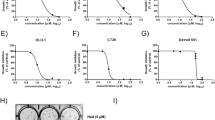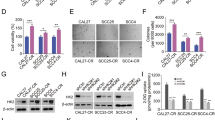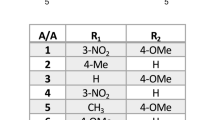Abstract
Helichrysetin (HEL), a chalcone isolated from Alpinia katsumadai Hayata, has an antitumor activity in human lung and cervical cancers. However, the inhibitory effect and underlying mechanism of HEL in gastric cancer have not been elucidated. Here, HEL significantly inhibited the growth of gastric cancer MGC803 cells in vitro and in vivo. HEL decreased expression and transcriptional regulatory activity of c-Myc and mRNA expression of c-Myc target genes. HEL enhanced mitochondrial oxidative phosphorylation (OXPHOS) and reduced glycolysis as evidenced by increased mitochondrial adenosine triphosphate (ATP) production and excessive reactive oxygen species (ROS) accumulation, and decreased the pPDHA1/PDHA1 ratio and Glyco-ATP production. Pyruvate enhanced OXPHOS after HEL treatment. c-Myc overexpression abolished HEL-induced inhibition of cell viability, glycolysis, and protein expression of PDHK1 and LDHA. PDHK1 overexpression also counteracted inhibitory effect of HEL on cell viability. Conversely, c-Myc siRNA decreased cell viability, glycolysis, and PDHK1 expression. NAC rescued the decrease in viability of HEL-treated cells. Additionally, HEL inhibited the overactivated mTOR/p70S6K pathway in vitro and in vivo. HEL-induced cell viability inhibition was counteracted by an mTOR agonist. mTOR inhibitor also decreased cell viability. Similar results were obtained in SGC7901 cells. HEL repressed lactate production and efflux in MGC803 cells. These results revealed that HEL inhibits gastric cancer growth by targeting mTOR/p70S6K/c-Myc/PDHK1-mediated energy metabolism reprogramming in cancer cells. Therefore, HEL may be a potential agent for gastric cancer treatment by modulating cancer energy metabolism reprogramming.
Similar content being viewed by others
Login or create a free account to read this content
Gain free access to this article, as well as selected content from this journal and more on nature.com
or
Data availability
All data that can prove the conclusion of this article are included in the article.
References
Chen W, Zheng R, Baade PD, Zhang S, Zeng H, Bray F, et al. Cancer statistics in China 2015. CA Cancer J Clin. 2016;66:115–32.
Global Burden of Disease Cancer Collaboration, Fitzmaurice C, Allen C, Barber RM, Barregard L, Bhutta ZA, et al. Global, regional, and national cancer incidence, mortality, years of life lost, years lived with disability, and disability-adjusted life-years for 32 cancer groups, 1990 to 2015: a systematic analysis for the global burden of disease study. JAMA Oncol. 2017;3:524–48.
Siegel RL, Miller KD, Jemal A. Cancer statistics, 2019. CA Cancer J Clin. 2019;69:7–34.
Amedei A, Benagiano M, della Bella C, Niccolai E, D’Elios MM. Novel immunotherapeutic strategies of gastric cancer treatment. J Biomed Biotechnol. 2011;2011:437348.
Corso G, Roncalli F, Marrelli D, Carneiro F. Roviello F. History, pathogenesis, and management of familial gastric cancer: original study of John XXIII’s family. Biomed Res Int. 2013;2013:385132.
Nagini S. Carcinoma of the stomach: a review of epidemiology, pathogenesis, molecular genetics and chemoprevention. World J Gastrointest Oncol. 2012;4:156–69.
Fujitani K, Yang HK, Mizusawa J, Kim YW, Terashima M, Han SU, et al. Gastrectomy plus chemotherapy versus chemotherapy alone for advanced gastric cancer with a single non-curable factor (REGATTA): a phase 3, randomised controlled trial. Lancet Oncol. 2016;17:309–18.
Choi YW, Ahn MS, Jeong GS, Lee HW, Jeong SH, Kang SY, et al. The role of surgical resection before palliative chemotherapy in advanced gastric cancer. Sci Rep. 2019;9:4136.
Apicella M, Corso S, Giordano S. Targeted therapies for gastric cancer: failures and hopes from clinical trials. Oncotarget. 2017;8:57654–69.
Babiker HM, Mcbride A, Newton M, Boehmer LM, Drucker AG, Gowan M, et al. Cardiotoxic effects of chemotherapy: a review of both cytotoxic and molecular targeted oncology therapies and their effect on the cardiovascular system. Crit Rev Oncol Hematol. 2018;126:186–200.
Sun L, Liu J, Yuan Y, Dong Z. Protective effect of the BET protein inhibitor JQ1 in cisplatin-induced nephrotoxicity. Am J Physiol Ren Physiol. 2018;315:F469–78.
Fan M, Wen Y, Ye D, Jin Z, Zhao P, Chen D, et al. Acid-responsive H2 -releasing 2D MgB2 nanosheet for therapeutic synergy and side effect attenuation of gastric cancer chemotherapy. Adv Health Mater. 2019;8:e1900157.
Hanahan D, Weinberg RA. Hallmarks of cancer: the next generation. Cell. 2011;144:646–74.
Granger A, Mott R, Emambokus N. Hacking cancer metabolism. Cell Metab. 2016;24:643–4.
Seyfried TN, Shelton LM. Cancer as a metabolic disease. Nutr Metab. 2010;7:7.
Gatenby RA, Gillies RJ. Why do cancers have high aerobic glycolysis? Nat Rev Cancer. 2004;4:891–9.
Vander Heiden MG, Cantley LC, Thompson CB. Understanding the Warburg effect: the metabolic requirements of cell proliferation. Science. 2009;324:1029–33.
Liu J, Pan C, Guo L, Wu M, Guo J, Peng S, et al. A new mechanism of trastuzumab resistance in gastric cancer: MACC1 promotes the Warburg effect via activation of the PI3K/AKT signaling pathway. J Hematol Oncol. 2016;9:76.
Liu L, Wang Y, Bai R, Yang K, Tian Z. MiR-186 inhibited aerobic glycolysis in gastric cancer via HIF-1α regulation. Oncogenesis. 2016;5:e224.
Gao S, Chen M, Wei W, Zhang X, Zhang M, Yao Y, et al. Crosstalk of mTOR/PKM2 and STAT3/c-Myc signaling pathways regulate the energy metabolism and acidic microenvironment of gastric cancer. J Cell Biochem. 2019;120:1193–202.
Ganapathy-Kanniappan S. Molecular intricacies of aerobic glycolysis in cancer: current insights into the classic metabolic phenotype. Crit Rev Biochem Mol Biol. 2018;53:667–82.
Gustafson WC, Weiss WA. Myc proteins as therapeutic targets. Oncogene. 2010;29:1249–59.
Zheng L, Liang X, Li S, Li T, Shang W, Ma L, et al. CHAF1A interacts with TCF4 to promote gastric carcinogenesis via upregulation of c-MYC and CCND1 expression. EBioMedicine. 2018;38:69–78.
Dang CV, Le A, Gao P. MYC-induced cancer cell energy metabolism and therapeutic opportunities. Clin Cancer Res. 2009;15:6479–83.
Kim JW, Gao P, Liu YC, Semenza GL, Dang CV. Hypoxia-inducible factor 1 and dysregulated c-Myc cooperatively induce vascular endothelial growth factor and metabolic switches hexokinase 2 and pyruvate dehydrogenase kinase 1. Mol Cell Biol. 2007;27:7381–93.
Shim H, Dolde C, Lewis BC, Wu CS, Dang G, Jungmann RA, et al. c-Myc transactivation of LDHA: implications for tumor metabolism and growth. Proc Natl Acad Sci USA. 1997;94:6658–63.
Osthus RC, Shim H, Kim S, Li Q, Reddy R, Mukherjee M, et al. Deregulation of glucose transporter 1 and glycolytic gene expression by c-Myc. J Biol Chem. 2000;275:21797–800.
Li F, Wang Y, Zeller KI, Potter JJ, Wonsey DR, O’Donnell KA, et al. Myc stimulates nuclearly encoded mitochondrial genes and mitochondrial biogenesis. Mol Cell Biol. 2005;25:6225–34.
Miller DM, Thomas SD, Islam A, Muench D, Sedoris K. c-Myc and cancer metabolism. Clin Cancer Res. 2012;18:5546–53.
Kim JW, Tchernyshyov I, Semenza GL, Dang CV. HIF-1-mediated expression of pyruvate dehydrogenase kinase: a metabolic switch required for cellular adaptation to hypoxia. Cell Metab. 2006;3:177–85.
Masui K, Tanaka K, Akhavan D, Babic I, Gini B, Matsutani T, et al. mTOR complex 2 controls glycolytic metabolism in glioblastoma through FoxO acetylation and upregulation of c-Myc. Cell Metab. 2013;18:726–39.
Zhang X, Chen J, Ai Z, Zhang Z, Lin L, Wei H. Targeting glycometabolic reprogramming to restore the sensitivity of leukemia drug-resistant K562/ADM cells to adriamycin. Life Sci. 2018;215:1–10.
Allen-Petersen BL, Risom T, Feng Z, Wang Z, Jenny ZP, Thoma MC, et al. Activation of PP2A and inhibition of mTOR synergistically reduce MYC signaling and decrease tumor growth in pancreatic ductal adenocarcinoma. Cancer Res. 2019;79:209–19.
Ali MS, Tezuka Y, Awale S, Banskota AH, Kadota S. Six new diarylheptanoids from the seeds of Alpinia blepharocalyx. J Nat Prod. 2001;64:289–93.
Vogel S, Ohmayer S, Brunner G, Heilmann J. Natural and non-natural prenylated chalcones: synthesis, cytotoxicity and anti-oxidative activity. Bioorg Med Chem. 2008;16:4286–93.
Hua SZ, Wang XB, Luo JG, Wang JS, Kong LY. A pair of unique sesquiterpene-chalcone conjugates isolated from the seeds of Alpinia katsumadai. Tetrahedron Lett. 2008;49:5658–61.
Lopez J, Tait SWG. Mitochondrial apoptosis: killing cancer using the enemy within. Br J Cancer. 2015;112:957–62.
Ho YF, Karsani SA, Yong WK, Abd, Malek SN. Induction of apoptosis and cell cycle blockade by helichrysetin in A549 human lung adenocarcinoma cells. Evid Based Complement Altern Med. 2013;2013:857257.
Fong HY, Malek SNA, Yee HS. Helichrysetin induces DNA damage that triggers JNK-mediated apoptosis in Ca Ski cells. Pharmacogn Maq. 2017;13:607–12.
Wang Q, Huang J, Ma K, Li T, Chen M, Wang S, et al. Evaluation of ghost cell survival in the area of radiofrequency ablation. PLoS One. 2012;7:e53158.
Shi HL, Liu CH, Ding LL, Zheng Y, Fei XY, Lu L, et al. Alterations in serotonin, transient receptor potential channels and protease-activated receptors in rats with irritable bowel syndrome attenuated by Shugan decoction. World J Gastroenterol. 2015;21:4852–63.
Shi J, Qu Y, Li X, Sui F, Yao D, Yang Q, et al. Increased expression of EHF via gene amplification contributes to the activation of HER family signaling and associates with poor survival in gastric cancer. Cell Death Dis. 2016;7:e2442.
Szafarowski T, Sierdzinski J, Szczepanski MJ, Whiteside TL, Ludwig N, Krzeski A. Microvessel density in head and neck squamous cell carcinoma. Eur Arch Otorhinolaryngol. 2018;275:1845–51.
Zhu X, Lei X, Wang J, Dong W. Protective effects of resveratrol on hyperoxia-induced lung injury in neonatal rats by alleviating apoptosis and ROS production. J Matern Fetal Neonatal Med. 2020;33:4150–8.
Li H, Wang P, Huang F, Jin J, Wu H, Zhang B, et al. Astragaloside IV protects blood-brain barrier integrity from LPS-induced disruption via activating Nrf2 antioxidant signaling pathway in mice. Toxicol Appl Pharmacol. 2018;340:58–66.
Kensler TW, Wakabayashi N, Biswal S. Cell survival responses to environmental stresses via the Keap1-Nrf2-ARE pathway. Annu Rev Pharmacol Toxicol. 2007;47:89–116.
Wei Y, Gong J, Xu Z, Thimmulappa RK, Mitchell KL, Welsbie DS, et al. Nrf2 in ischemic neurons promotes retinal vascular regeneration through regulation of semaphorin 6A. Proc Natl Acad Sci USA. 2015;112:6927–36.
McSweeney SR, Warabi E, Siow RC. Nrf2 as an endothelial mechanosensitive transcription factor: going with the flow. Hypertension. 2016;67:20–9.
Shang Y, Zhou Q, Wang T, Jiang Y, Zhong Y, Qian G, et al. Airborne nitro-PAHs induce Nrf2/ARE defense system against oxidative stress and promote inflammatory process by activating PI3K/Akt pathway in A549 cells. Toxicol Vitr. 2017;44:66–73.
Jaramillo MC, Zhang DD. The emerging role of the Nrf2-Keap1 signaling pathway in cancer. Genes Dev. 2013;27:2179–91.
Kroemer G, Dallaporta B, Resche-Rigon M. The mitochondrial death/life regulator in apoptosis and necrosis. Annu Rev Physiol. 1998;60:619–42.
Zhu J, Wu G, Song L, Cao L, Tan Z, Tang M, et al. NKX2-8 deletion-induced reprogramming of fatty acid metabolism confers chemoresistance in epithelial ovarian cancer. EBioMedicine. 2019;43:238–52.
Volobueva A, Melnichenko A, Grechko A, Orekhov AN. Mitochondrial genome variability: the effect on cellular functional activity. Ther Clin Risk Manag. 2018;14:237–45.
Leanza L, Romio M, Becker KA, Azzolini M, Trentin L, Managò A, et al. Direct pharmacological targeting of a mitochondrial ion channel selectively kills tumor cells in vivo. Cancer Cell. 2017;31:516–31.
Piccinini M, Mostert M, Alberto G, Ramondetti C, Novi RF, Dalmasso P, et al. Down-regulation of pyruvate dehydrogenase phosphatase in obese subjects is a defect that signals insulin resistance. Obes Res. 2005;13:678–86.
Gordan JD, Thompson CB, Simon MCHIF. and c-Myc: sibling rivals for control of cancer cell metabolism and proliferation. Cancer Cell. 2007;12:108–13.
Kim J, Gao P, Liu YC, Semenza GL, Dang CV. Hypoxia-inducible factor 1 and dysregulated c-Myc cooperatively induce vascular endothelial growth factor and metabolic switches hexokinase 2 and pyruvate dehydrogenase kinase 1. Mol Cell Biol. 2007;27:7381–93.
Laplante M, Sabatini DM. mTOR signaling in growth control and disease. Cell. 2012;149:274–93.
Di Conza G, Trusso Cafarello S, Loroch S, Mennerich D, Deschoemaeker S, Di Matteo M, et al. The mTOR and PP2A pathways regulate PHD2 phosphorylation to fine-tune HIF1α levels and colorectal cancer cell survival under hypoxia. Cell Rep. 2017;18:1699–712.
Martini M, De Santis MC, Braccini L, Gulluni F, Hirsch E. PI3K/AKT signaling pathway and cancer: an updated review. Ann Med. 2014;46:372–83.
Acknowledgements
Special thanks to Prof. Weidong Zhang (SHUTCM) for providing key apparatus for the measurement of mitochondrial energy metabolism. Great thanks to Prof. Jingshan Shen (Shanghai Institute of Materia Medica, Chinese Academy of Sciences, Shanghai, China) for giving us HEL for research.
Funding
This work was supported by Shanghai Municipal Natural Science Foundation (21ZR1462800); Educational Commission of Shanghai of China (2020LK014, 18LK015); the National Natural Science Foundation of China (81603354); Graduate Student Innovation Ability Project of Shanghai University of Traditional Chinese Medicine (Y2020030, Y2021088), Shanghai E-research Institute of Bioactive Constituent in TCM plan and the Opening Project of Shanghai Key Laboratory of Compound Chinese Medicines (17DZ2273300).
Author information
Authors and Affiliations
Contributions
PW and JMJ did most of experiments and wrote the original draft. XHL took part in finishing cell metabolism assays and Western blotting assay. MZY took part in cell culture and Western blotting assay for manuscript revision. CY took part in cell culture and Western blotting assay. FH and XYF took part in Annexin/PI staining. HW supported to optimize experimental protocols. ZTW and RX gave valuable suggestion for this manuscript. HLS and XJW designed experiments and wrote the manuscript. All authors read and approved the final manuscript.
Corresponding authors
Ethics declarations
Competing interests
The authors declare no competing interests.
Ethics approval and consent to participate
All animal experiments were carried out in accordance with the protocol approved by the Animal Ethics Committee in Shanghai University of Traditional Chinese Medicine (SHUTCM), which complies with international rules and policies for laboratory animal use and care as founded in the European Community guidelines (EEC Directive of 1986; 86/609/EEC). All animal experiments were approved by the institutional Ethics Committee of SHUTCM (SZY20160914).
Supplementary Information
Rights and permissions
About this article
Cite this article
Wang, P., Jin, Jm., Liang, Xh. et al. Helichrysetin inhibits gastric cancer growth by targeting c-Myc/PDHK1 axis-mediated energy metabolism reprogramming. Acta Pharmacol Sin 43, 1581–1593 (2022). https://doi.org/10.1038/s41401-021-00750-0
Received:
Accepted:
Published:
Issue Date:
DOI: https://doi.org/10.1038/s41401-021-00750-0
Keywords
This article is cited by
-
A novel peptide PDHK1-241aa encoded by circPDHK1 promotes ccRCC progression via interacting with PPP1CA to inhibit AKT dephosphorylation and activate the AKT-mTOR signaling pathway
Molecular Cancer (2024)
-
The identification and validation of hub genes associated with advanced IPF by weighted gene co-expression network analysis
Functional & Integrative Genomics (2022)



